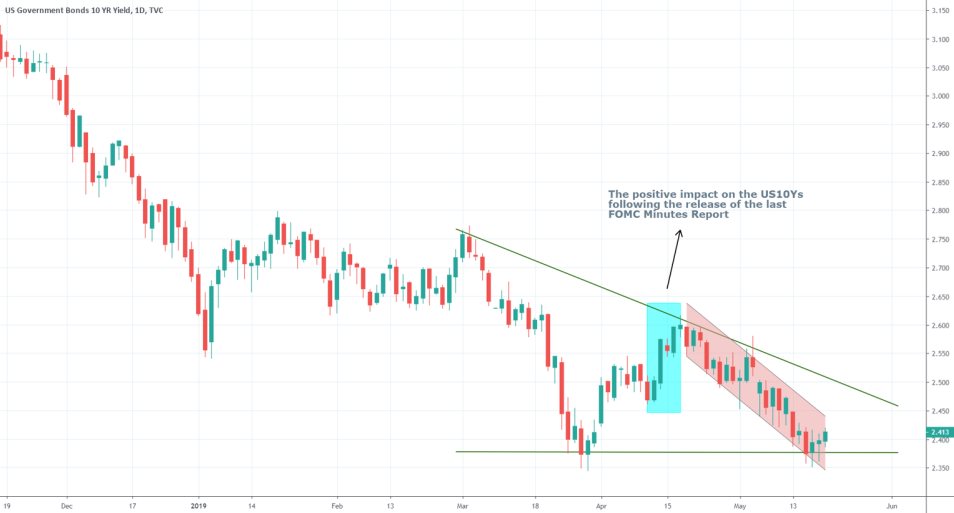
The key event this week will undoubtedly be this Wednesday’s highly anticipated release of the Minutes report from the last FOMC meeting on the first of May. The market is gearing up to hear the FED's general opinions about the state of affairs within the US economy and most importantly its projections about future growth so that investors can ultimately weigh in on the possibility of future changes of the main funds rate.
Apart from the US dollar, the most significant impact from the release of the report is expected to be felt in the US bonds market due to FED's determination to ‘slow the pace of the decline in reserves. The FED's reserves policy has thus far had an overall positive effect on negating the investors' fears over the yield curve inversion (you can read more on that here).
From the previously released FOMC Minutes report on the 10th of April, it became evident that the FED's prime goal is to secure the long-term sustainability of the US economy by implementing a tighter control on the US Securities market:
“The Committee intends to slow the reduction of its holdings of Treasury securities by reducing the cap on monthly redemptions from the current level of $30 billion to $15billion beginning in May 2019” [source]
After that statement was made public the US 10 years Government Bond's yield increased with more than 5% in the first week following the release of the Minutes, which was a welcoming relief in the otherwise bearish momentum on the market that was initiated in November last year. However, the positive effect was short-lived as the yield right now is at its lowest level since January 2018.
Given the current situation in the States, most notably the sound labour and inflation data and the worrisome reoccurring tensions in global trade, the FED can be expected to at the very least implement a more vocal stance in a bid to secure its long-term agenda.
The market will also be anticipating to hear whether there would be any new advancements in the FED's projections for the future growth of the US economy, as that could potentially tip the scales in favour of future hikes of the primary interest rate. In the last such statement, the FED forecasted a likely decline in the Change of the Real GDP to 1.8% through 2021 from the expected 2.1% for 2019 [source]
This expected tightening in the growth of the US economy could necessitate a hike in the key interest rate, provided that the FED manages to sustain the current state of affairs in the labour market and also achieve its ambitions for more sustainability in the US treasuries sector. Overall, Wednesday's report should demonstrate the FOMC's change of attitudes in regards Trump's renewed attack on the Chinese trade and most importantly to reveal whether the US economy as a whole is developing in accordance to the initial forecasts. The most significant impact following the release of the report is expected to be felt in the US bonds market and to result in increased volatility.





















